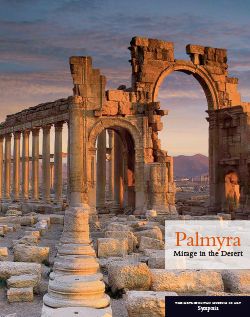Tessera
Not on view
Banquets and feasts that took place after religious sacrifices were important ritual events in the prosperous caravan city of Palmyra during the first and second centuries of this era. Attendance at these events was limited to those who held a ticket in the form of a stamped token, known today as a tessera after the Greek word for a small square object. Most tesserae from Palmyra are made of clay that was shaped and pressed in a matrix, imprinting it with a design on both sides similar to a coin. A few examples were made of glass or metal. Small clay lumps could also be impressed by carved gems set into signet rings, with the design that resulted identifying the owner of the ring who was perhaps the sponsor of the sacrifice and the banquet that followed. Over a thousand tesserae from Palmyra have been collected, revealing the remarkable variety in shapes and designs that were used for this type of object. Tesserae could be formed as simple or complex shapes, and could bear elaborate or plain decorative motifs, sometimes with inscribed text, and in rare instances an inscribed date. This tessera is shaped like an arch with a flat groundline. One side shows a figure in a draped garment and priest’s modius, a flat-topped cylindrical headdress, reclining under a luxuriant grapevine. On the other side, a bearded male figure at left and a figure wearing a helmet or floppy cap at right flank what may be a large vessel; two rosettes appear at the bottom. The tessera is not inscribed so we do not know the identities of these figures or what their images symbolized, beyond the connections to festive drinking implied by the grapevine and vessel.
This image cannot be enlarged, viewed at full screen, or downloaded.
This artwork is meant to be viewed from right to left. Scroll left to view more.







